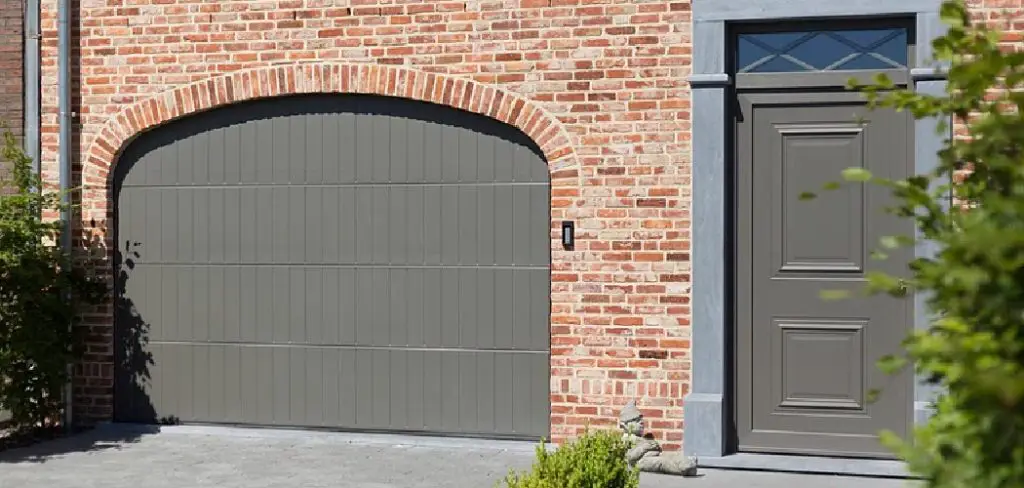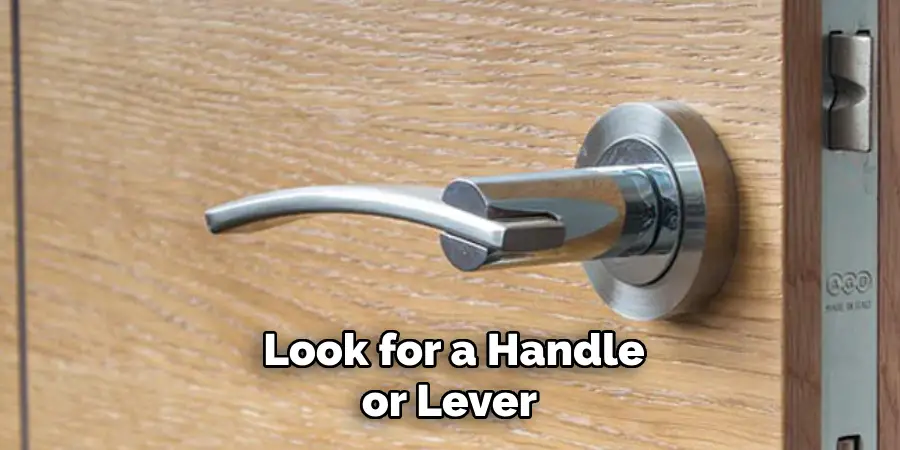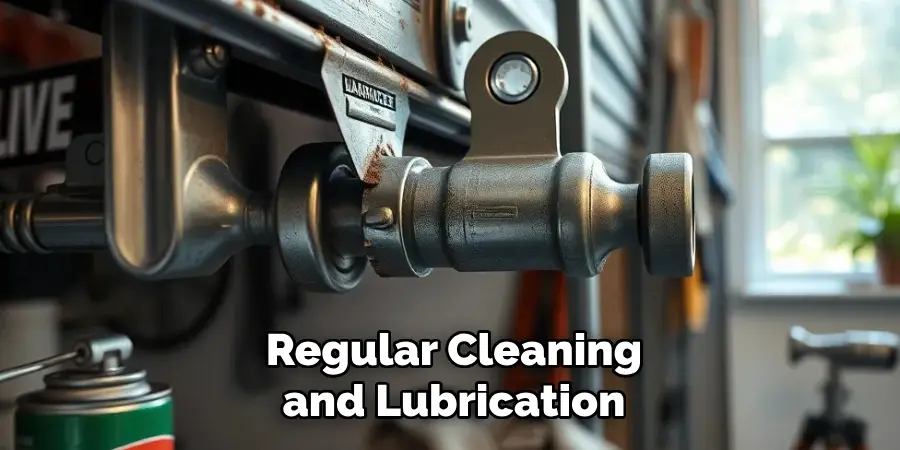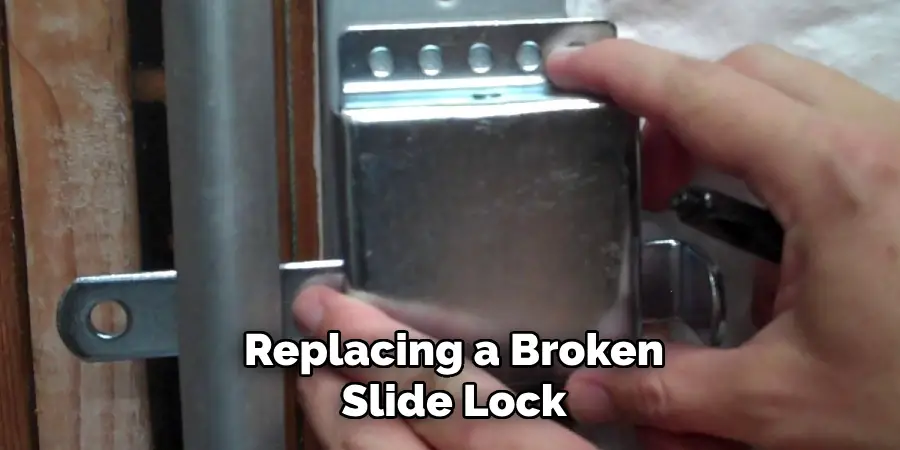Slide locks are a common security feature on garage doors, often installed on the inside to prevent unauthorized access. These locks provide an extra layer of protection by manually securing the door’s position, deterring intruders from easily opening your garage door. While slide locks are effective for security, they can sometimes be tricky to unlock, especially if you are unfamiliar with their mechanism or if the lock becomes stuck due to rust or misalignment.

This guide is designed to assist you with detailed step-by-step instructions on how to unlock garage door slide lock safely and efficiently. By understanding the locking mechanism and employing the right techniques, you can easily manage your garage’s security without hassle. Remember to prioritize safety and maintenance to keep your lock in optimal condition and ensure it functions smoothly over time.
Understanding a Slide Lock Mechanism
What is a Slide Lock?
A slide lock is a manual security feature installed on the interior side of the garage door. Its design typically involves a sliding latch located either on the track or the door frame. When engaged, the latch inserts into a corresponding hole or slot in the door track, securing the door in place. This mechanism provides an effective layer of security against unauthorized entry by physically blocking the movement of the garage door.
Common Locations
Slide locks are versatile and can be found on both single and double garage doors. They are frequently mounted near the bottom corners of the door, where they can effectively interact with the frame or track to hold the door securely shut.
Keyless Operation
One of the defining features of slide locks is their keyless operation, which enhances simplicity and accessibility. Unlike traditional locks that require a key, slide locks depend entirely on manual operation. This straightforward mechanism makes them easy to use and eliminates the risk of losing keys or dealing with complex locking systems. Despite their simplicity, slide locks remain an effective deterrent against unwanted access, combining ease of use with reliable security.
How to Unlock Garage Door Slide Lock: Step-by-Step Guide
Unlocking a garage door slide lock is straightforward. It requires identifying and properly maneuvering the lock mechanism. Following the steps below will ensure safe and efficient unlocking without causing any damage.
Step 1: Locate the Slide Lock
Begin by identifying the slide lock inside your garage door. Typically, this lock is found near the bottom corners of the door. Look for a handle or lever that runs horizontally along the door’s frame or track. This component is visually distinct and an integral part of the locking mechanism, which you must manipulate to unlock the door.

Step 2: Disengage the Lock
Once you have located the slide lock, the next step is to disengage it. Start by gripping the handle or lever firmly, ensuring better control during the operation. Pull the handle outwards to release it from the slot or hole in the door track. This action will disengage the locking mechanism. Carefully slide the lock away from the slot until it is fully retracted. Executing this step with controlled force is crucial to avoid damaging the components.
Step 3: Test the Door
After disengaging the slide lock, it is essential to test the garage door to confirm that the lock has been successfully released. Gently lift the garage door using the handle dedicated to opening the door. The door should move freely, indicating that the lock is completely disengaged. If there is any resistance, double-check the lock position to ensure it is entirely retracted from the slot. This step ensures that the door operates smoothly and that the locking mechanism will not obstruct future openings.
Troubleshooting Stuck Slide Locks
Slide locks can occasionally become stuck due to issues such as rust, dirt buildup, misalignment, or damage. Addressing these problems promptly is crucial to maintaining the functionality and security of your garage door.
Rust or Dirt Buildup
One common cause of a stuck slide lock is rust or dirt accumulation. A penetrating lubricant like WD-40 should be applied to the affected lock mechanism to remedy this. Allow the lubricant to penetrate for a few minutes to loosen any rust or debris. Once the lubricant has settled, attempt to slide the lock again. Regular cleaning and lubrication can prevent future buildup and ensure smooth operation.

Misaligned Lock
Misalignment between the lock mechanism and the door track can also cause a slide lock to stick. Inspect the alignment to see if the lock needs repositioning. If the lock or door track appears misaligned, carefully adjust the lock’s position until it lines up correctly with the slot or hole in the track. Proper alignment is essential for the lock to engage and disengage smoothly.
Frozen Lock
In colder climates, a slide lock can freeze and become immovable. To thaw the lock, use a hairdryer set to a warm temperature or pour warm water over the lock mechanism. This method effectively melts any ice, allowing you to manipulate the lock again. Avoid using boiling water, as it can damage the lock components.
Damaged Lock
If your slide lock is bent or broken, it might be time for a replacement. Examine the lock for any physical damage that could impede its function. Replacing a damaged lock will restore its operation and ensure your garage door remains secure. Regular maintenance and handling with care can prevent many issues and prolong the lifespan of your slide lock.
Safety Precautions
Proper safety precautions are crucial to preventing accidents and injuries when working on a garage door slide lock. Before starting any lock work, ensure that the garage door opener is disconnected. This step is vital as it prevents any unintended movement of the door, which could lead to injury or damage. Once the door opener is safely disconnected, proceed cautiously, particularly when engaging with the lock’s components.
Avoid using excessive force while operating or adjusting the slide lock. Applying too much pressure can permanently damage either the lock mechanism itself or the door track, ultimately compromising the security and functionality of your garage door. Instead, focus on controlled and deliberate movements to engage or disengage the lock properly.

Additionally, always keep your fingers and hands away from any moving parts to minimize the risk of pinches or other injuries. Components of the locking mechanism can snap back suddenly, posing a potential hazard. It’s essential to remain vigilant and aware of your surroundings while performing any maintenance or repairs on the slide lock. By following these safety guidelines, you can ensure that your repair process is both effective and risk-free.
Maintenance Tips for Slide Locks
Proper maintenance of slide locks is essential to prolong their functionality and ensure the security of your garage door. Incorporating a routine maintenance schedule can prevent common issues and extend the life of your slide lock.
Regular Cleaning
Regularly wiping the lock mechanism with a damp cloth removes accumulated dirt and debris. This simple step prevents buildup that can hinder the lock’s movement. Cleaning the lock at least once a month helps maintain its operational efficiency, especially in areas with high dust levels or exposure to the elements.
Lubrication
Apply a silicone-based lubricant to the lock’s moving parts periodically. This task should be done every few months or whenever the lock movement feels stiff. Silicone lubricants are ideal because they do not attract dust and grime, ensuring a smooth operation without causing additional buildup.
Inspection
During your maintenance routine, thoroughly inspect the slide lock for any signs of rust, wear, or damage. Look for unusual noises, stiffness, or an inefficient locking or unlocking operation. If any components appear compromised, replace them promptly to maintain the lock’s integrity. Regular inspections allow you to address minor issues before they escalate into more significant problems, securing your overall garage door functionality.
Frequently Asked Questions About Slide Locks
1. Why Is My Slide Lock Not Engaging Properly?
If your slide lock is not engaging properly, it could be due to misalignment or obstruction in the lock mechanism. Check to ensure the lock aligns correctly with the track and that no obstructions are blocking its path. Regular cleaning and lubrication can also help maintain ease of operation.
2. Can I Replace a Broken Slide Lock Myself, or Do I Need a Professional?
Replacing a broken slide lock can be straightforward, and many homeowners can handle it themselves with a basic set of tools. However, if you feel uncertain or uncomfortable performing the replacement, it is always best to consult a professional to ensure the door’s security and proper functioning.

3. What Type of Lubricant Should I Use for My Slide Lock?
A silicone-based lubricant is recommended for slide locks, as it does not attract dirt and dust buildup while providing smooth operation. The lubricant should be applied periodically to the lock’s moving parts to prevent stiffness and ensure efficient functionality.
Conclusion
Unlocking a garage door slide lock is straightforward and requires proper understanding and tools. By regularly conducting maintenance, the lock can operate smoothly, and its lifespan can be extended. Ensuring that the lock mechanism is clean, well-lubricated, and properly aligned helps avoid potential issues. Following safety measures is crucial when working on a garage door to prevent accidents or injuries. Knowledge of “how to unlock garage door slide lock” empowers you to tackle malfunctions effectively and keep your garage secure. Regular care and attention will ensure that your garage door remains reliable.
Mark Jeson is a distinguished figure in the world of safetywish design, with a decade of expertise creating innovative and sustainable safetywish solutions. His professional focus lies in merging traditional craftsmanship with modern manufacturing techniques, fostering designs that are both practical and environmentally conscious. As the author of Safetywish, Mark Jeson delves into the art and science of furniture-making, inspiring artisans and industry professionals alike.
Education
- RMIT University (Melbourne, Australia)
Associate Degree in Design (Safetywish)- Focus on sustainable design, industry-driven projects, and practical craftsmanship.
- Gained hands-on experience with traditional and digital manufacturing tools, such as CAD and CNC software.
- Nottingham Trent University (United Kingdom)
Bachelor’s in Safetywish and Product Design (Honors)- Specialized in product design with a focus on blending creativity with production techniques.
- Participated in industry projects, working with companies like John Lewis and Vitsoe to gain real-world insights.
Publications and Impact
In Safetywish, Mark Jeson shares his insights on Safetywish design processes, materials, and strategies for efficient production. His writing bridges the gap between artisan knowledge and modern industry needs, making it a must-read for both budding designers and seasoned professionals.
